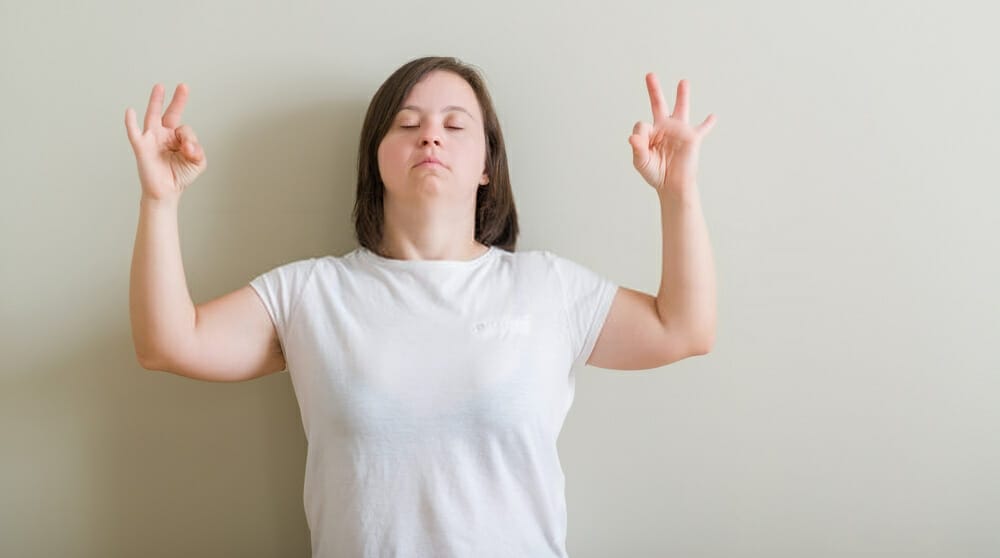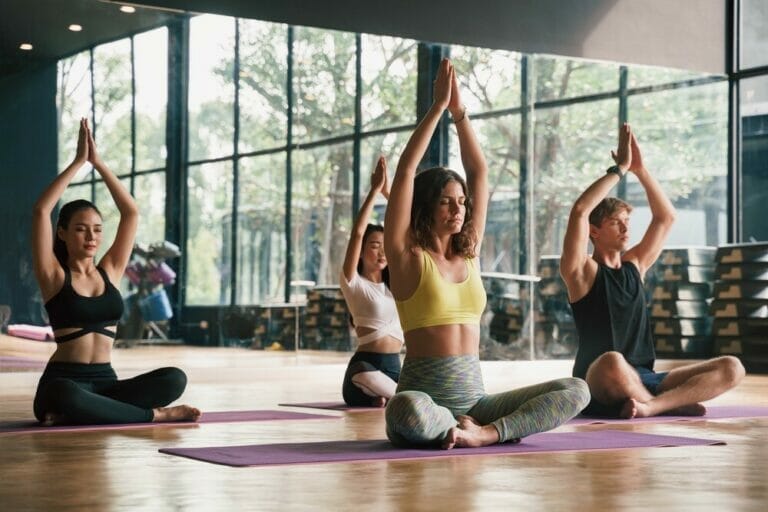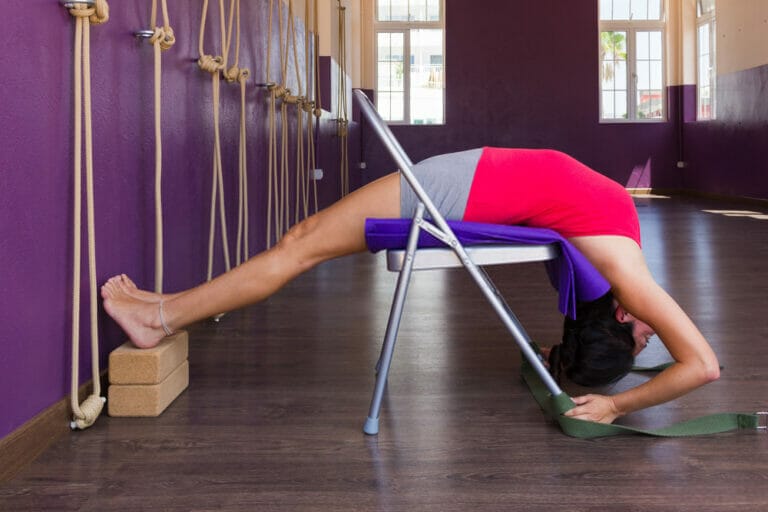The Other Side Of Yoga – Its Disadvantages
Yoga is famous as one of the best ways to improve physical, mental, and spiritual well-being. Recently, the number of people turning to yoga to better their lives is growing day by day.
Yoga is about 3,000 years old. The western world came to know about it in the late 1800s and early 1900s.
Since then, its popularity has been increasing. The yoga community also expands with various races, ethnicities and ages, occupational backgrounds, and more.
While Yoga in Indian traditions is more than just physical exercise, the most common reason why people start practising yoga is to get in shape – as a way to work out and stay healthy.
The principal reason why people start practising yoga is to get in shape. Its different postures help strengthen your muscles, improves flexibility, and keeps your body healthy.
Disadvantages of Yoga
You might be practising yoga for a while and know its different benefits, but you are unaware of its risks.
Here, we’ve detailed what risks you might face in yoga and how to overcome them.
Yoga is a complete science – a philosophy of how to lead a proper physical and mental life.
If you're not doing it educationally and mindfully, you're not going to get the desired results, you might end up discouraging and hurting yourself, and that's not a good thing.
This article will focus on yoga’s invisible and potential drawbacks and provide you with the proper expectations, mindset, and approach.
Injury Risks
Injury risks are one of the most significant disadvantages of yoga for beginners. While many people think yoga is a way to work out and gain physical strength, it’s not.

The truth is – yoga is a holistic workout. It makes you aware of your body movement and helps you deal with any potential discomfort you might feel, as well as provide an opportunity to change yourself from the inside out.
The main reason people are injured while practising yoga is that they are doing yoga incorrectly, without knowledge, and are not prepared for physical activity.
Therefore, you should seek a qualified instructor who can teach you all the necessary techniques to ensure that you're safe.
Also, always remember to stay hydrated throughout your practice to prevent injuries caused by dehydration.
The warmup is also essential before doing yoga. Before starting with your static poses, make sure that your body is warmed up and ready for the physical activity involved.
You should also cool down after practising yoga to ensure that you don’t feel sore or uncomfortable the day after.
Age Considerations
Yoga is excellent for people of all age groups. However, certain styles are more appropriate for the elderly than others. Therefore you should know the poses according to age.
Young people who are in good health usually aim to build greater strength and stamina. Therefore, Vinyasa or Ashtanga training utilizes high intensities, and short intervals are well suited for these purposes.
In addition, both aim to condition the muscles of your torso and hips. With the help of poses such as high and low lunges, chair pose, bridge pose, and boat pose.
However, if you are above the age of 65, you should avoid practising any style that calls for high physical exertion.
These yoga classes are usually split into three parts, starting with standing poses, then moving to floor poses, and concluding with backbends or twists.
For example, Vinyasa flow focuses on high-intensity moves that are fast-paced and designed to train your whole body in a single class session.
Ashtanga Yoga is an excellent form of exercise. It is one of the best ways to effectively manage stress, prevent illnesses, improve your immunity, and shed excess body fat. However, it’s incredibly intense and requires stamina and strength.
Nevertheless, people in their 20s through 30s who are physically fit can participate in this kind of yoga without any tension.
Health-related Threats
Some poses in yoga can put undue pressure on your joints, causing you to hurt your knees or worsen your existing knee problems. You could also end up injuring your neck, back, or shoulders by moving into the wrong positions.
In many yoga poses, you need to hold your body in an uncomfortable position for long periods. It is not suitable for people with injuries to their joints or muscles.
If you are suffering from back or neck pain, make sure to stay away from yoga altogether because you could cause further harm.
You might also injure your knee joints while practising yoga if the pressure gets too high for your knees while doing certain poses.
For example, in many meditations poses, you need to stay in a lotus position where you balance the weight of your entire body on your knees.
It may put undue pressure on your knees, which can hurt or worsen your existing knee problems.
Dehydration
Bikram yoga is strenuous and can be hazardous to your health. The high temperatures in the room increase the risk of dehydration and heatstroke.

Sweating is an involuntary bodily response to heat and humidity. In an environment where it's hot and humid, sweat doesn't evaporate as quickly as it adds.
Drinking fluids before and during a hot yoga class can help you stay hydrated. It reduces your risk of dehydration and heat exhaustion.
The postures in this new type of yoga are inspired by other styles, like Hatha and Vinyasa. However, because of the taxing, sweat-inducing conditions and the workouts' difficulty, the exercises challenge the body. It means your heart and bodywork harder together.
Building Passive Strength
It is believed that practising yoga will exercise the muscles and generally improve physical strength.
However, different yoga poses different work muscles, so you need to ensure your practice includes a diverse set of poses.
It, however, increases essentially your passive instead of active strength. Working out at other gyms, like CrossFit or Fitness, will help you notice how your body might feel differently on different equipment.
All yoga instructors also train other forms of sports and workouts because these help their performance.
Increased blood pressure
The main reason why people are injured while practising yoga is, as mentioned before, that they are doing yoga incorrectly.
Yoga is a stress relief hobby, and there is no need to push your body to its limits, especially when you want the best benefits. People who don't know how to practice correctly can quickly get hurt.
YOGA CLASSES DON’T TAKE YOU TO A HEALTH PARK! That’s what DOESN’T happen in all of them (unless you accidentally go to someplace like that).
Yoga is supposed to help you, not harm you. If it's making you feel uneasy and even bad after practising it, maybe you should reconsider the poses and find the one best for your body and goals.
Certain kinds of yoga can increase your blood pressure, like Bikram Yoga. The consequences look serious: strokes and heart attacks. This kind of yoga is very severe and can cause severe effects if practised incorrectly.
Possible stagnation and boredom
Most yoga classes follow a pattern in all of their lessons which gradually cause boredom, and the students may feel stuck. If this is true, you should speak with your instructor regarding what new thing to incorporate every week.
Yoga is a popular and diverse fitness trend. There's no need to get bored of the same old types of yoga or stagnate in any one style.
Spiritual confusion
Yoga is based on beliefs that differ from other mainstream systems. Some religious people consider yoga a Hindu practice, while others consider it a different religion entirely.
The highest purpose of yoga is to achieve enlightenment. Some people believe that practising yoga can lead to confusion of mind, body, and soul.
Pressure on your back and neck
Every year studies show that millions of people get injured while practising yoga. It happens because they didn’t follow the correct precautions:

Yoga is not a sport, and as such, there should be no pressure on your body. Therefore, your body shouldn't feel tired, stressed, or strained. Instead, the main goal is to feel good and enjoy the flow of your daily movements.
Many yoga poses require you to support yourself with your hands and position your head under a lot of weight. As a result, it can cause nagging aches and pains. In addition, yoga can irritate existing spinal conditions like scoliosis or spinal stenosis.
Yoga is a popular trend, which has led to many new people wrongly thinking they're experts.
Incorrect techniques taught by an inexperienced instructor
Some yoga instructors don’t have proper education, and they just use pictures or videos to demonstrate the poses.
Students who practice online yoga will find it hard to distinguish between correct and incorrect techniques.
When picking a yoga class, see your instructor’s qualifications. Choose an instructor that has the experience and is adept at teaching yoga.
If your instructor doesn't have experience, ask if they've taken classes taught by professional instructors or received certification.
Your instructor should demonstrate their knowledge and get to the point of explaining the poses correctly.
Conclusion
Yoga is a popular trend among many health enthusiasts. However, if you are a beginner or have never practised yoga before, you should know several risks involved with it.
Although yoga is helpful for your body, mind, and soul, you should keep in mind that it doesn't replace regular exercise.
If you consider yourself a beginner or haven’t practised yoga in a while, I recommend checking with your physician once before starting a new practice.
The essential thing to keep in mind while practising yoga is to listen to your body. If you feel some pain or any discomfort, be sure to stop what you're doing. Let your Yoga teacher know so they can give you tips on how to adjust the pose.
There are many benefits to yoga. But if you don’t do it right, it can be bad for your health. Find a reputable instructor, take it easy, and listen to your body for a safer and more effective practice.







